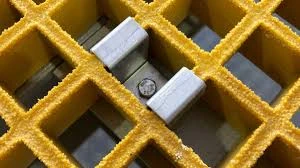
-
 Afrikaans
Afrikaans -
 Albanian
Albanian -
 Amharic
Amharic -
 Arabic
Arabic -
 Armenian
Armenian -
 Azerbaijani
Azerbaijani -
 Basque
Basque -
 Belarusian
Belarusian -
 Bengali
Bengali -
 Bosnian
Bosnian -
 Bulgarian
Bulgarian -
 Catalan
Catalan -
 Cebuano
Cebuano -
 China
China -
 China (Taiwan)
China (Taiwan) -
 Corsican
Corsican -
 Croatian
Croatian -
 Czech
Czech -
 Danish
Danish -
 Dutch
Dutch -
 English
English -
 Esperanto
Esperanto -
 Estonian
Estonian -
 Finnish
Finnish -
 French
French -
 Frisian
Frisian -
 Galician
Galician -
 Georgian
Georgian -
 German
German -
 Greek
Greek -
 Gujarati
Gujarati -
 Haitian Creole
Haitian Creole -
 hausa
hausa -
 hawaiian
hawaiian -
 Hebrew
Hebrew -
 Hindi
Hindi -
 Miao
Miao -
 Hungarian
Hungarian -
 Icelandic
Icelandic -
 igbo
igbo -
 Indonesian
Indonesian -
 irish
irish -
 Italian
Italian -
 Japanese
Japanese -
 Javanese
Javanese -
 Kannada
Kannada -
 kazakh
kazakh -
 Khmer
Khmer -
 Rwandese
Rwandese -
 Korean
Korean -
 Kurdish
Kurdish -
 Kyrgyz
Kyrgyz -
 Lao
Lao -
 Latin
Latin -
 Latvian
Latvian -
 Lithuanian
Lithuanian -
 Luxembourgish
Luxembourgish -
 Macedonian
Macedonian -
 Malgashi
Malgashi -
 Malay
Malay -
 Malayalam
Malayalam -
 Maltese
Maltese -
 Maori
Maori -
 Marathi
Marathi -
 Mongolian
Mongolian -
 Myanmar
Myanmar -
 Nepali
Nepali -
 Norwegian
Norwegian -
 Norwegian
Norwegian -
 Occitan
Occitan -
 Pashto
Pashto -
 Persian
Persian -
 Polish
Polish -
 Portuguese
Portuguese -
 Punjabi
Punjabi -
 Romanian
Romanian -
 Russian
Russian -
 Samoan
Samoan -
 Scottish Gaelic
Scottish Gaelic -
 Serbian
Serbian -
 Sesotho
Sesotho -
 Shona
Shona -
 Sindhi
Sindhi -
 Sinhala
Sinhala -
 Slovak
Slovak -
 Slovenian
Slovenian -
 Somali
Somali -
 Spanish
Spanish -
 Sundanese
Sundanese -
 Swahili
Swahili -
 Swedish
Swedish -
 Tagalog
Tagalog -
 Tajik
Tajik -
 Tamil
Tamil -
 Tatar
Tatar -
 Telugu
Telugu -
 Thai
Thai -
 Turkish
Turkish -
 Turkmen
Turkmen -
 Ukrainian
Ukrainian -
 Urdu
Urdu -
 Uighur
Uighur -
 Uzbek
Uzbek -
 Vietnamese
Vietnamese -
 Welsh
Welsh -
 Bantu
Bantu -
 Yiddish
Yiddish -
 Yoruba
Yoruba -
 Zulu
Zulu
frp weir
Understanding FRP Weirs A Comprehensive Overview
Fiber Reinforced Polymer (FRP) weirs are increasingly becoming a significant solution in hydraulic and water resource engineering. These structures offer remarkable benefits over traditional materials, primarily due to their lightweight nature, high strength, corrosion resistance, and ease of installation. Let’s delve into the specifics of FRP weirs, examining their properties, applications, advantages, and limitations.
What is an FRP Weir?
A weir is a barrier across an open channel designed to regulate water flow. It creates a specific upstream water level, allowing for control of river and stream flows in a precise manner. FRP weirs utilize advanced composite materials that incorporate fibers (such as glass or carbon) within a polymer matrix. This combination results in a robust structure that provides both durability and flexibility.
Properties of FRP Weirs
1. Corrosion Resistance One of the outstanding characteristics of FRP materials is their resistance to chemical degradation. Unlike traditional materials like concrete and steel, FRP is not susceptible to rust, which significantly prolongs the lifespan of the weir even in harsh environments.
2. Lightweight The lightweight nature of FRP allows for easier handling and installation. This can reduce transportation costs and site preparation time compared to heavier materials. The reduced weight can also alleviate the load on supporting structures.
3. High Strength-to-Weight Ratio Despite being lightweight, FRP weirs maintain a high strength-to-weight ratio. This allows them to withstand significant hydraulic pressures without compromising structural integrity.
4. Customization FRP can be molded into various shapes and sizes, providing flexibility in design. This customization helps engineers tailor solutions to meet specific site conditions and project requirements.
Applications of FRP Weirs
frp weir

FRP weirs have a wide range of applications in various fields
- Water Resource Management They are often used in irrigation channels and flood control systems, where precise water level management is crucial. - Wastewater Treatment Plants In treatment facilities, FRP weirs help in measuring and controlling the flow of effluents, contributing significantly to efficient waste management processes. - Hydropower Projects In hydropower generation, FRP weirs can be employed to regulate water flow and facilitate the optimal operation of turbines. - Marine Environments Given their resistance to saltwater and other corrosive environments, FRP weirs are suitable for coastal and marine applications.
Advantages of FRP Weirs
The advantages of FRP weirs make them an attractive option for engineers and project managers
1. Durability The long lifespan associated with FRP materials means that these weirs require less frequent replacement, leading to lower long-term maintenance costs. 2. Safety The non-corrosive nature of FRP reduces the risks associated with structural failures, promoting safer operational environments. 3. Environmental Impact The lower weight and installation simplicity can reduce the environmental footprint of construction projects, aligning with contemporary sustainability goals.
Limitations
While FRP weirs bring numerous benefits, they are not without limitations. Cost can be a factor; initial investments for FRP materials may be higher than traditional alternatives. Additionally, special considerations during design and installation are necessary to ensure optimal performance, which may require specialized expertise.
Conclusion
In summary, FRP weirs represent a modern, effective solution for various hydraulic engineering applications. With their unique properties of corrosion resistance, lightweight construction, and high strength, they are well-suited for diverse environments. As the demand for sustainable and efficient water management solutions grows, the role of FRP weirs in hydraulic engineering is expected to expand further, reinforcing their importance in contemporary water resource management. Understanding their capabilities can help engineers and stakeholders make informed decisions to address increasingly complex water challenges.









